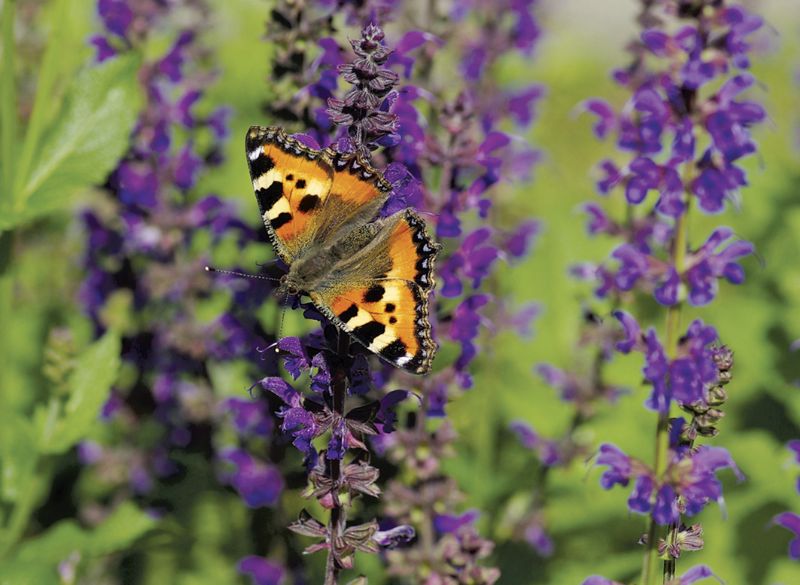- Home
- News, Articles & Reviews
We are hiring! Please click here to join our growing magazine delivery team in Gloucestershire!

Beautiful butterflies
All Areas > Pets & Wildlife > Wildlife Matters
Author: Maxine Raggatt, Posted: Wednesday, 26th June 2019, 09:00
It is that beautiful time of year again where you will see many different species of butterflies when you step outside.
Butterflies are cold-blooded, so you will often see them resting in a sunny spot with their wings open. They do this to soak up the sun, as the warmer the butterfly is the more efficient their metabolism will be.
Butterflies don’t have any chewing mouthparts; they eat by using their proboscis. This is a straw-like structure which they use to drink up nectar. They also drink from puddles and ponds to get nutrients from the salt. When the proboscis is not in use, it is coiled up like a garden hose.
The small tortoiseshell butterfly is widespread throughout Britain and Ireland, and they have a lifespan of about one year. Males and females look the same, but the females can be a few millimetres bigger than the males.
Metamorphosis
There are four stages of metamorphosis, beginning with the females laying their eggs on tender stinging nettles in batches of 60 to 100. Caterpillars will hatch around 10 days later and will eat the stinging nettles. It takes about 21 days for the caterpillar to become fully grown. The chrysalis stage lasts approximately 12 days, and then an adult butterfly emerges.
Hibernation
Sometimes batches of eggs are laid later in the year, so these butterflies will hibernate during the winter. Hibernation starts in late September, and dark spots are often favoured, like a garden shed or dark and unused rooms in buildings.
It is a good idea to check unused rooms in your home or business during the winter to look for any hibernating butterflies. Turning up the heating may cause confusion and butterflies can come out of hibernation early into unsuitable outside conditions where the weather is cold and nectar is scarce.
How you can help
You can attract butterflies to your garden by planting flowers they will love. Some examples are English lavender, marjoram, verbena, hebe and coneflower (Echinacea). These can be grown in the ground or in pots, which is especially helpful if you don’t have a garden, as you can use a window flower box.
Fruit is also a favourite for butterflies. Why not involve the children and make a butterfly feeder? All you will need is a paper plate or anything you can hang with string. You can put down kiwi, oranges, peaches, strawberries and watermelon, to name a few. Another helpful idea is to put a banana in the freezer and leave it out to thaw on the plate, as they enjoy overripe and mushy fruits.
How many butterflies will you spot this summer?Other Images
Copyright © 2025 The Local Answer Limited.
Unauthorized use and/or duplication of this material without express and written permission from this site's author and/or owner is strictly prohibited. Excerpts and links may be used, provided that full and clear credit is given to The Local Answer Limited and thelocalanswer.co.uk with appropriate and specific direction to the original content.More articles you may be interested in...


© 2025 The Local Answer Limited - Registered in England and Wales - Company No. 06929408
Unit H, Churchill Industrial Estate, Churchill Road, Leckhampton, Cheltenham, GL53 7EG - VAT Registration No. 975613000You are leaving the TLA website...
You are now leaving the TLA website and are going to a website that is not operated by us. The Local Answer are not responsible for the content or availability of linked sites, and cannot accept liability if the linked site has been compromised and contains unsuitable images or other content. If you wish to proceed, please click the "Continue" button below:




